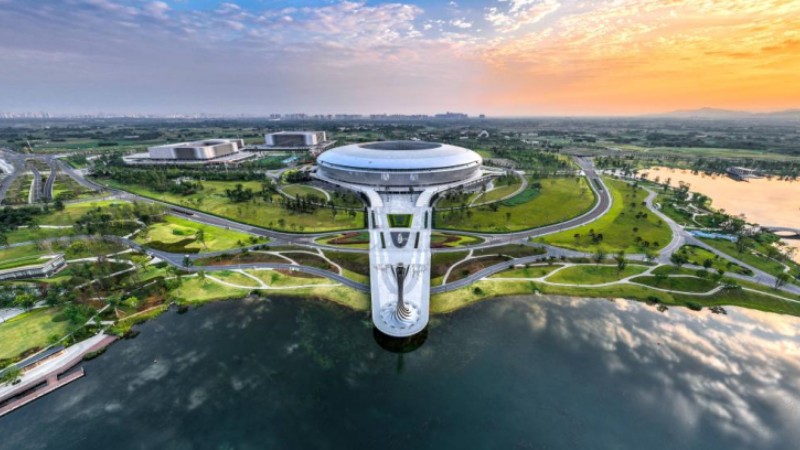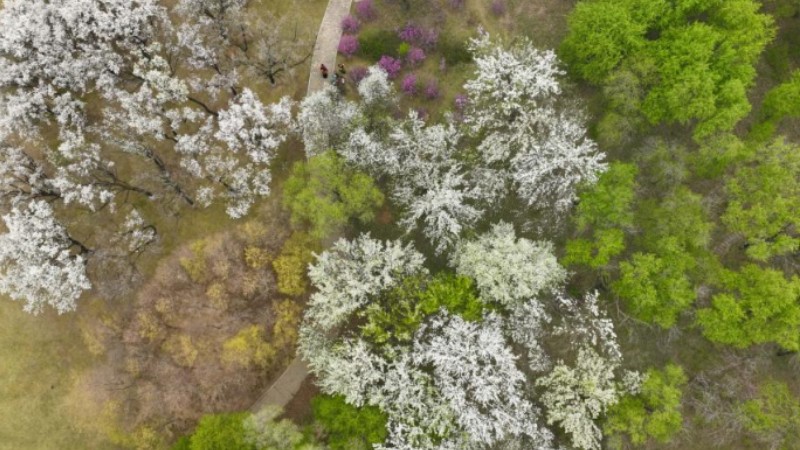National archaeological site parks receive 146 mln visits in 5 years

Aerial photo taken on Oct. 15, 2021 shows the Yangshao Village national archaeological park in Mianchi County, central China's Henan Province. (Xinhua/Li An)
WUHAN, April 19 (Xinhua) -- Over the five years between 2018 and 2022, more than 50 national archaeological site parks in China have received 146 million visits, according to sources from the National Cultural Heritage Administration (NCHA) Tuesday.
The administration held a work conference on the development of the country's national archaeological site parks in Wuhan, central China's Hubei Province.
As of the end of 2022, China has 55 national archaeological site parks, according to an NCHA report that recounts the development of such parks between 2018 and 2022.
But what are national archaeological site parks? According to a set of national regulations on the management of these parks, they are public cultural spaces developed on archaeological sites, and they can serve multiple purposes, including scientific research, education and recreation.
When members of the public visit these parks, they can see how archaeological work is carried out and observe archaeological findings up close. Not only that, they can also experience archaeological excavations and cultural relic restoration, and gain a profound understanding of the cultural and historical value of the sites.
Currently, such parks have been developed at some of the most renowned archaeological sites in China, including the Old Summer Palace, or "Yuanmingyuan" in Beijing, as well as the Sanxingdui Ruins in Sichuan, and the Mausoleum of the First Qin Emperor in Shaanxi.
Compared with other public parks, the archaeological nature of these parks is their most recognizable trait. According to Guan Qiang, deputy head of the NCHA, these parks have now become irreplaceable locations for the exhibition of the long history and illustrious civilization of the Chinese nation.
However, the development of these parks is faced with obstacles. For instance, the report noted that professionals are much needed to improve management, advance research and enhance brand image, so as to facilitate the parks' high-quality development.
In the meantime, as cultural consumption and the culture economy develop, people are opting for more personalized and diversified cultural experiences of a higher quality. National archaeological site parks ought to fully grasp this trend and address the people's needs in this regard, said Li Qun, head of the NCHA.
National archaeological site parks are public cultural spaces shared by the people, and their development should always take into consideration this principle, Li said.
Photos
Related Stories
Copyright © 2023 People's Daily Online. All Rights Reserved.









